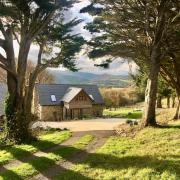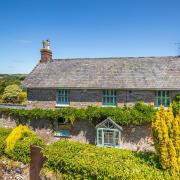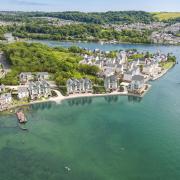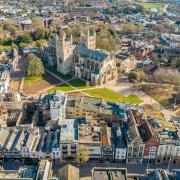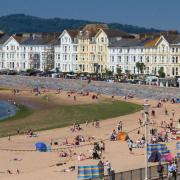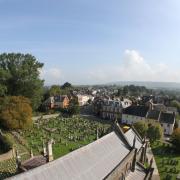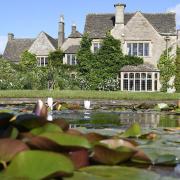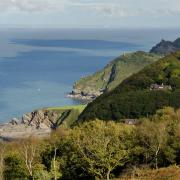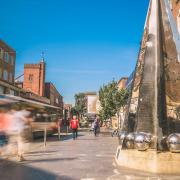A magnificent replica of a Viking warship called Sea Stallion will be sailing along the coast of Devon this month - and you should be able to spot somewhere along the way.
This month a replica Viking longship will sail from Dublin, around Land's End and along the southern coast of Devon, on its way back to Denmark. The Sea Stallion is a
30-metre (98ft 6in) craft based on the salvaged remains of a ship that was built in Viking Dublin in the 1040s and sunk in Denmark. It served no practical purpose except as a troop carrier.
This replica vessel was built by Roskilde Viking Museum in Denmark, who wanted to find out more how the ship could operate. They used Viking technology, splitting timber down the grain with axes, which makes for an immensely strong but flexible structure.
The Sea Stallion can carry 70 people, their food and equipment - albeit rather uncomfortably - and it has already made its way over the North Sea and down the West Coast of Scotland to Dublin, taking 40 days to do so.
The Sea Stallion is just the kind of craft that allowed the Vikings to strike Devon in large numbers, with virtually no warning, and to pull out with similar ease. While we think of the Vikings as raiders, their destructive impact on the kingdoms of England is not always appreciated.
The Burghal Hideage
In the 870s, King Alfred the Great had to hide to escape Viking attention before he rallied his forces, organised a great defensive system across Wessex, known as the Burghal Hideage, and drove the Vikings east. The Hideage required 27,000 men to man the network of fortifications, including the great hill fort at Countisbury on the North Devon coast, which stretched right across Wessex to the borders of Kent in the east. Each 'hide', an area of land capable of supporting a family, had to supply a soldier to defend and maintain a section of fortification. So huge was the mobilisation of men that nothing similar would be seen until the 17th and 18th centuries; the cost must have been crippling. Alfred's war machine, built in response to the Vikings, enabled Wessex to create the state of 'England' within two generations.
Roaming terror
A second burst of Viking activity in the late 900s, followed by a full-blooded invasion, actually led to a Viking takeover of England in the early 1000s. A number of fortified towns, including Exeter, held out. The Saxon efforts to shore up the walls are still evident today. But Alfred's cohesive system seems to have gone. Vikings were able to roam the countryside and sack areas near to Exeter, even if they didn't get into the town itself.
Social and political bonds broke under the pressure. People were less willing to come to the aid of neighbouring shires. The clergy saw it as divine punishment for the failures of the English. "I sense an intensification and desperation in the raids of the late 10th century," says the leading Cambridge historian Simon Keynes. "There is a sense of helplessness."
In 997, a Viking raiding party that had already caused havoc in Wales and Cornwall hit Devon. They attacked and destroyed many sites, including Tavistock monastery on the Tamar. But their progress was halted six miles further north by the defences at Lydford.
Perhaps that was Lydford's high point. During the later Middle Ages and the early modern period, the important defensive centre shrank to a small village. Lack of development acted as an unintended force for preservation. Today the huge ramparts remain and you can walk down the spinal high street with its original side streets, just as it was conceived 100 years before, as part of Alfred the Great's network of fortifications.
Carsten Hvid, skipper of the Sea Stallion, thinks a lot about why the Vikings created these specialist craft. "This is an extreme ship, built by people with power and money, who wanted to keep that power, so they built the best of the best - and of course that is fascinating."
AEDAN KERNAN
To follow the ship's progress visit www.seastallion.dk



